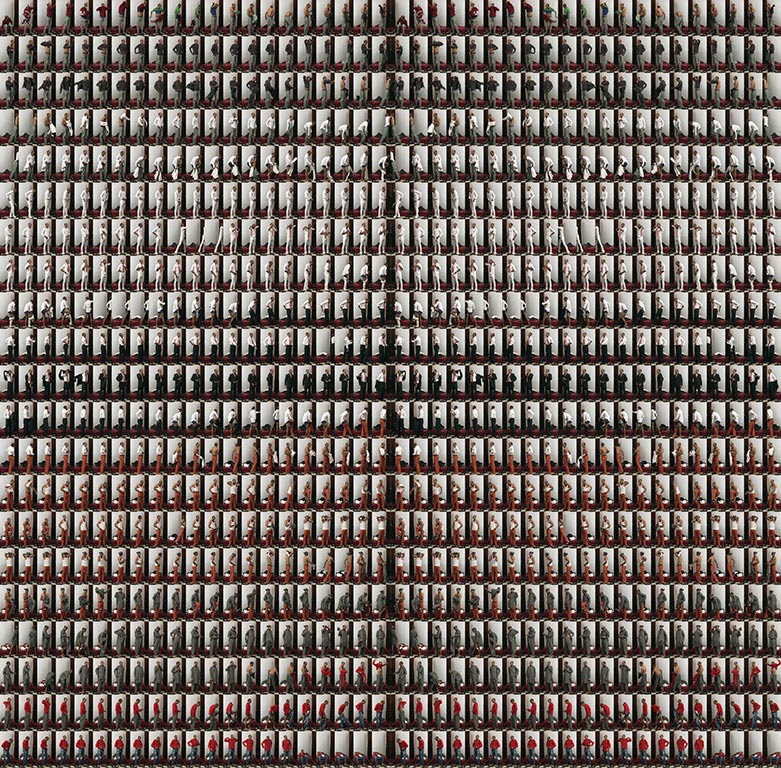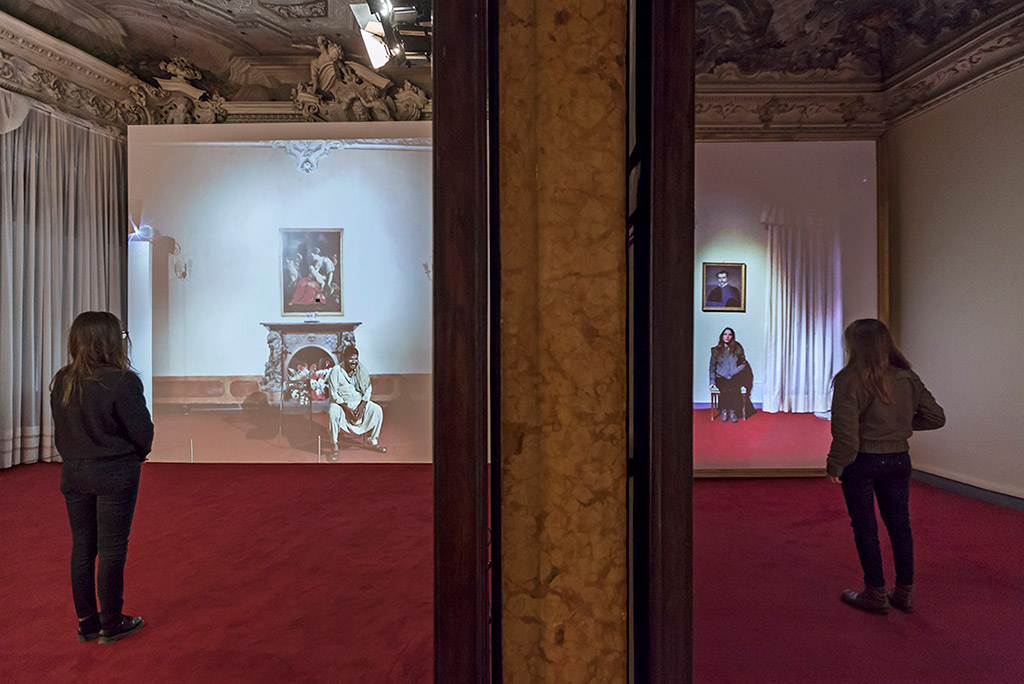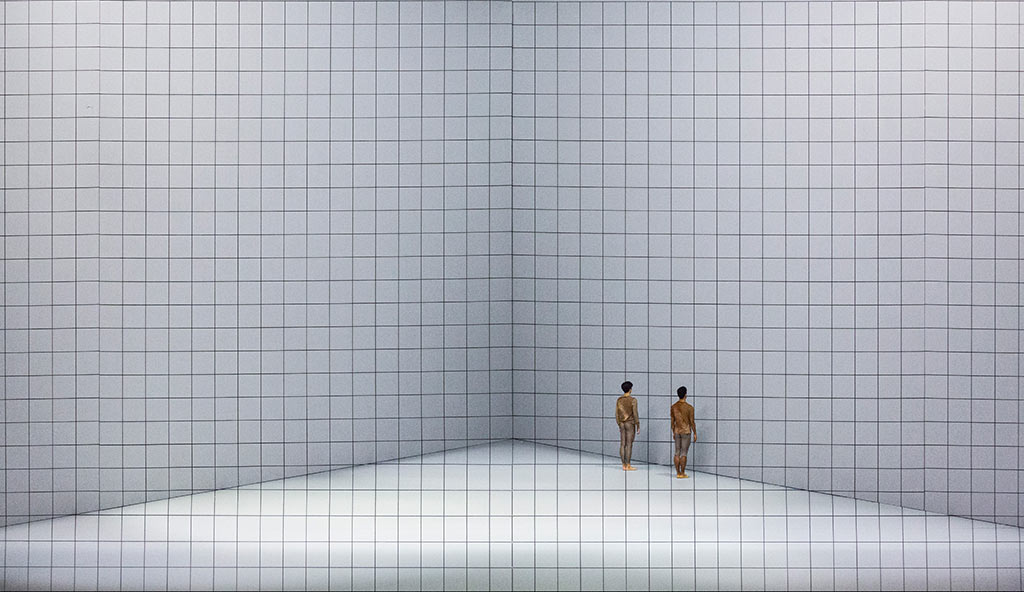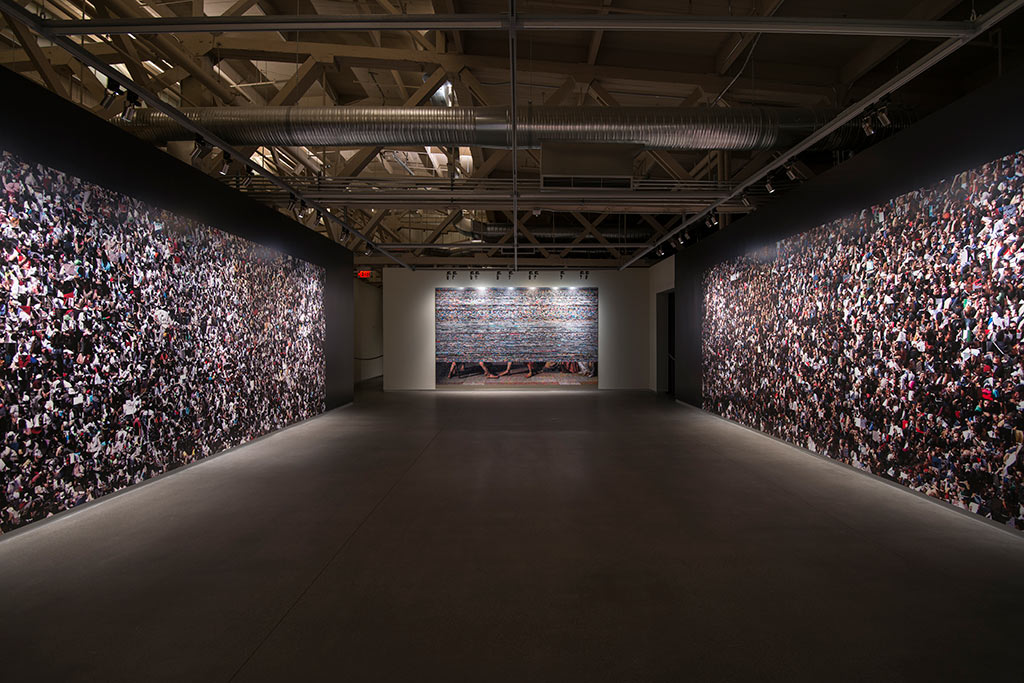Portraits of Possibility
Artist Rashid Rana talks to us about his process, his interpretation of the medium, his role as an ‘editor of images’ and the big picture that drives his process
Vani Sriranganayaki
Last year, the Chennai Photo Biennale had put up an impressive show at the Senate House in Madras University. It is hardly news to anyone now, thanks to the numerous articles waxing eloquent that the colonial building, otherwise closed to the public, is in itself stunning. During the course of the month-long exhibition, I visited Senate House twice – not because I was completely enchanted by the building (well, not entirely), but because I realised that with my jaw wide open the first time, I had skipped over a few remarkable works on display. Prominent among them was a red carpet, which was hung right at the back of the building. Distinctly Persian in style, it was easy enough to assume that it came with the building – another colonial remnant of sorts. During my second visit, when informed that it was actually part of the exhibit, a work created by the leading Pakistani artist Rashid Rana, I stopped for a closer look. We all have those epiphanic moments in life when the fuzzy ends suddenly become clear, and this, for me, was one of those moments. Up close, it was no longer just a carpet, but a large photo-mosaic composed of thousands of tiny images of Lahori slaughterhouse carnage. The red colour, drawn from the blood and flesh of animals, which flows into each other forming an intricate weave in perfect likeness of a Persian rug, highlighted Rana’s tendency of building a provocative narrative out of disparate sources.

Throughout his career, Rana has created works that often swing between the two polar ends of the personal and the social – from I Love Miniatures and Veil to What Lies Between Flesh and Blood, he manages to bring the intimate within the public domain and vice versa. ‘I think every image, idea and truth encompasses its opposite within itself. Thus, we can say that we live in a state of duality. These dualities seem to exist separately but are inseparable when inspected closely. My intent is not to try and separate the polar opposites but it is rather to bring them on a singular plane for the viewer to inspect and form connections,’ he said. In our conversation over e-mail, he explained the more nuanced aspects of his process; his explorations into photography, both as a medium and as a subject; and allowed a peek into the ‘big picture’ that lurks quietly but surely in all his works.
Excerpts from the conversation
You were trained as a painter and yet most of your works are photo-based. How critical has the shift been in your exploration of the different commentaries laced within your works or the medium itself? Do you tend to prioritise one over the other or is it more seamless?
Initially, I was trained as a painter but gradually my practice became idea-driven. In the year 1999–2000, I made a series of paintings based on familiar photographic references, which I used to collect from various sources and edit them as per my conceptual needs. I made these works with the help of assistants because achieving painterly quality or signature style was not the objective. After this series, I realised that the edited photo reference can itself be the work, and that the final step of painting on canvas was unnecessary in terms of my objectives. This thought led to the use of thousands of images where I assumed the role of an ‘editor of images’ as opposed to the creator of original ones. Having worked with abundance of photo content for a number of years, I can say that my practice is medium-led too (at least it is true for photo-based works). In other words, one’s practice is not idea-driven or medium-driven in the absolute sense – one oscillates between the idea-led and the medium-led approach.

You had previously said that you did not want to be seen as a regional artist, but would rather prefer to be seen as a transnational one. Your works, however, have often been tied to the ‘orient’, specifically the traditional East–West dichotomies. What would you say is the characteristic specific to your practice and your works that allows you to tread such contradictory lines with such ease?
In a wider sense, unburdening from self-imposed pressures of prescriptive and dogmatic ideas of affiliating one’s identity to political and cultural boundaries has been one of the core ideas in my practice throughout my career, be it my art-making, teaching or curatorial works. I believe that the binaries of East and West are often overplayed. The binaries of ‘actual’ and ‘remote’ are more plausible in this regard; one’s expression is a result of a negotiation between the ‘actual’ and the ‘remote’. The actual is close at hand – something one can experience directly with the body as the site of knowing. The remote is knowledge amassed indirectly, from diverse sources scattered across time and space. The result is a meditation on location, both in a physical as well as a temporal sense.

You are famous for your photomontages where the main image is made up of several smaller photographs completely opposite to their subject matters. What comes first? Do you visualise the final image first? Or is it a more form follows function kind of scenario where you work out the details first and the big picture just follows?
There is no formula to it, nor are there no concrete rules on how to construct the image. It is an organic process. There are initial concerns in mind which are translated accordingly, and that sometimes helps with the selection of the images. Each concern longs for its own methodology and becomes a complete whole when I find a means to translate it. For example, in the mosaic series, the macro image came to mind first, followed by an idea that matched the image. So in this case the image paved a way for the idea.

Movement and time are other concepts that often pop up within your works. And consistently, they seem to defy the rules of the otherwise very fixed medium. What challenges do you usually face when you are essentially weaving together what seem like moving pictures within a larger static image?
Although I have been labelled a new-media artist, primarily because of my interest in the tools of technology, yes, I am interested in the moving image; but it is the conventional format of a two-dimensional static image that fascinates me the most. Perhaps, this is the reason why I often find myself translating time-based experience into a single static image – works such as Dis-location Series and Identical Views are examples of it.
More recently, I am increasingly becoming interested in the notion of time. My project for the joint India and Pakistan Pavilion at the Venice Biennale in 2015 was an attempt to subvert linear ideas of time and space progressions, to offer fractured views of chronology and geography.

Your works are more a social commentary, a parody or a critique on popular culture. The imagery is often of everyday places or scenarios. Yet there is a sense of theatricality to them. What would you attribute this characteristic to?
Critique is a strong word because I believe in the fact that the meanings hide behind the eye of the onlooker rather than in the sight itself; or if I may say: the viewer is the new artist. Therefore, I mostly focus on the possibility of evoking new associations or meanings through the juxtaposing of popular and familiar visual vocabulary from our surroundings and presenting it in a new setting and context of gallery (art), where this new context is bound to add the element of drama to it; the same notion as to when something is archived. If it is deemed important enough to be saved, then that attention is what is somehow translated into theatricality.

You had said earlier that photography, to you, is no longer just a medium, but rather a theme or a subject in its self. Where ultimately, would you say is your photography going?
It is unprecedented the number of photographed images an average human being experiences on a daily basis. The realisation that we truly live in the age of images has led me to assume my role as an editor of images. Therefore, I don’t consider myself a photographer as I do not work from that premise. The arrival of photography changed the role of an artist and the ways in which they created images previously. But it was only after a century that it was used as a subject matter during the Photorealism of the 1970s. I feel there is still unexplored potential in photography as a subject. In my works, which are often referred to as photo sculptures, photographs are used as minimal three-dimensional objects. Instead of just using the photograph as an illusion of space on a flat surface, I wanted to explore how two-dimensional documentation, taken from various viewpoints could be assembled and reassembled. My purpose is not to expand the possibilities of photography per se, but to expose its limitations.

Finally, what do you personally seek to express through your images? And if it can be described in one word, what would it be?
I am interested in a variety of subject matters drawn from diverse sources. Perhaps, it is the subversive approach that is the common link in all these ideas. But if I must reduce it to one word as to what I seek through my practice, then that would have to be ‘possibility’.
Share
